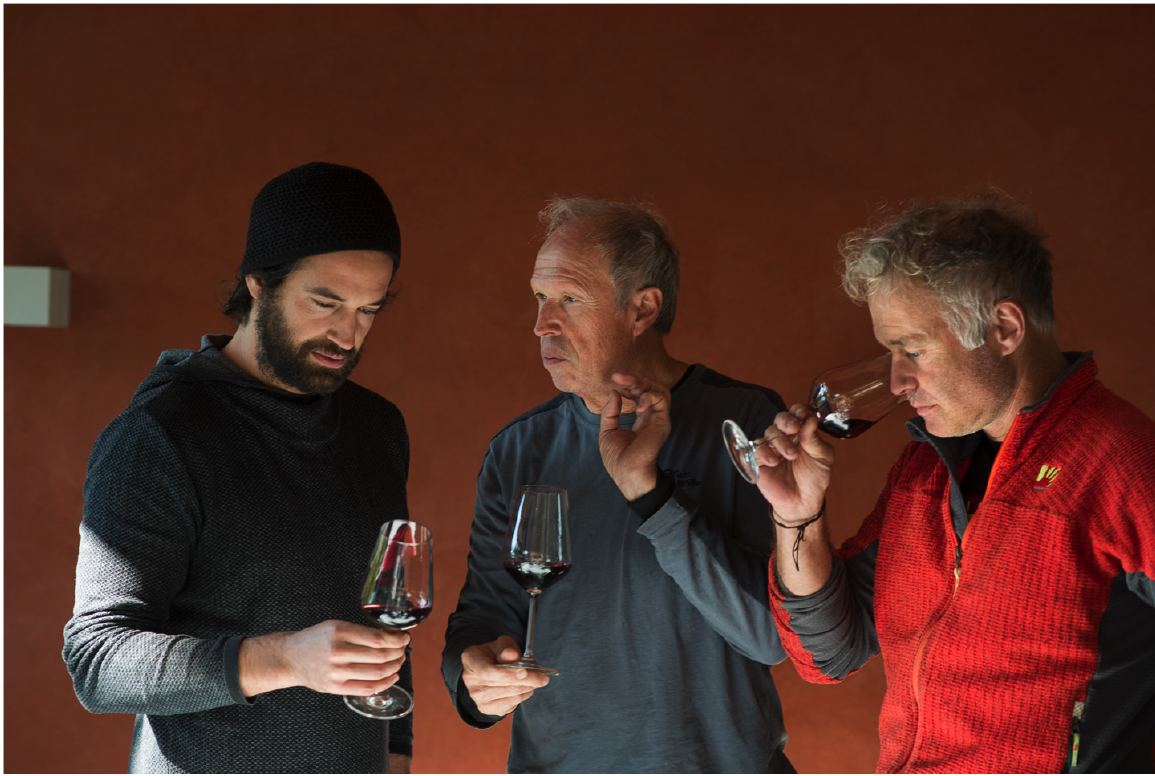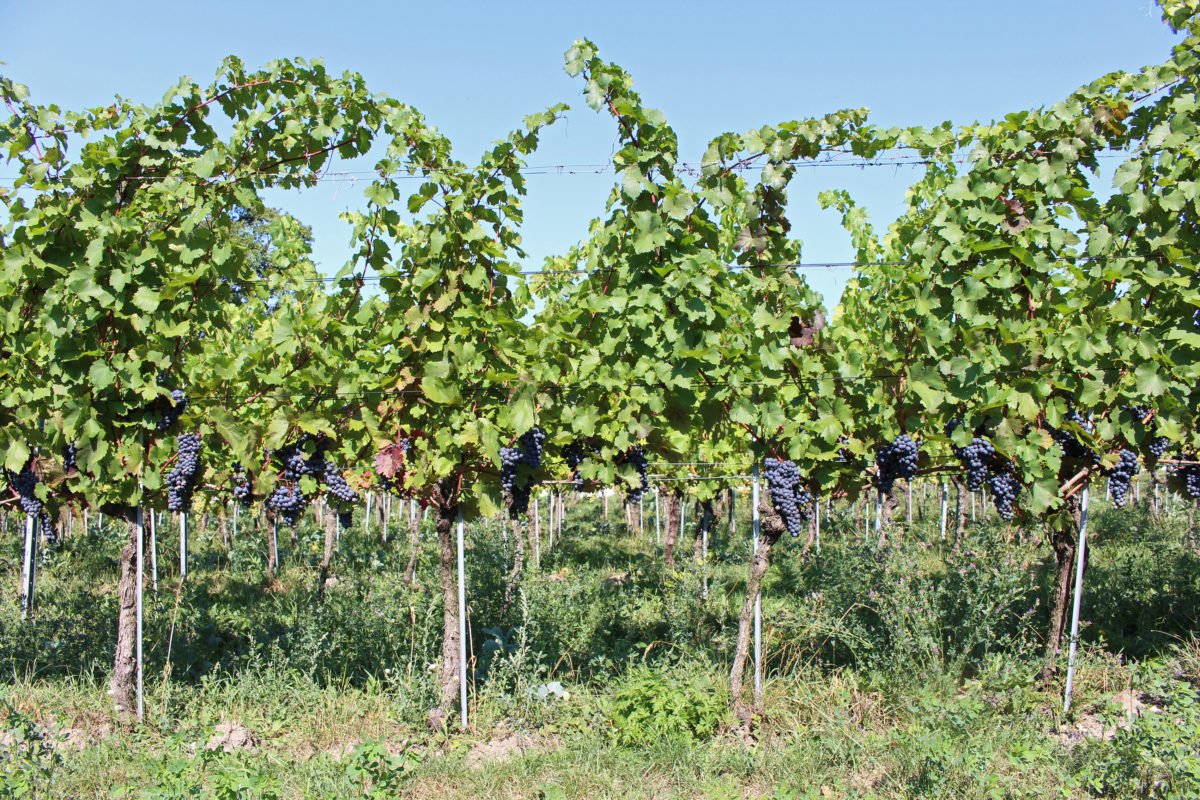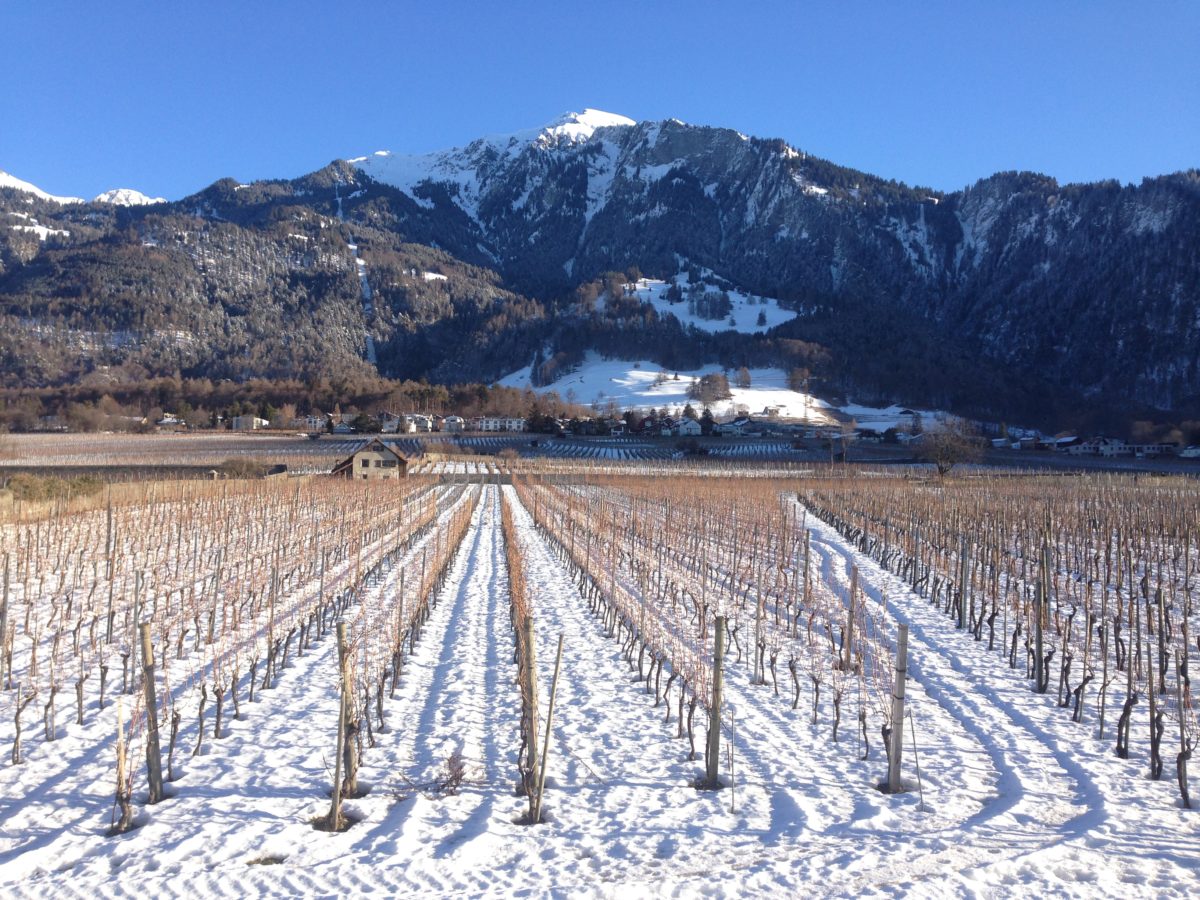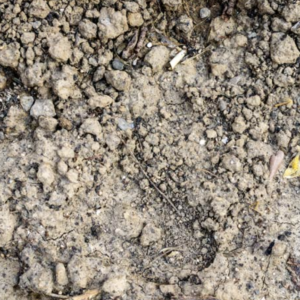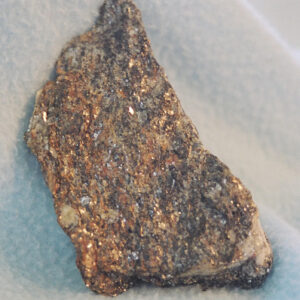“We believe that making a natural wine does not correspond with leaving everything to chance. We need to understand in detail every process in the vineyard and during fermentation. Only then can we reach the essence of every grape and its terroir.” — Marco Fromm
For five generations, the Fromm family has dedicated itself to the cultivation of pinot noir in the high mountain terrain of Graubünden, where Switzerland touches Austria and Alto Adige. The valley floor sits at 550 meters (1,800 feet) above sea level; vineyards climb from there. Just 2% of Swiss wine makes it out of the country, due in part to what Jancis Robinson calls “some of the world’s prettier and more inconvenient vineyards” and in part to a deep domestic appreciation for the exceptional quality produced in those parcels. As rare as it is to find these wines in the U.S., it is even more extraordinary to taste those from the hand of legendary vintner Georg Fromm. 2019 marked his 50th harvest. Though not all of his work with pinot noir has been in the home vineyards of Malans, decades of globe-trotting experience has given him rare perspective on his mountain terroir. Of the Fromms’ 7 hectares, 5 are a handful of historic crus. Each is distinguished by the varying compositions of their soils, slight differences in exposition, hours of sunlight and microclimatic influences — especially the warming Alpine wind known as Föhn. Of decisive impact are a mix of Burgundian and old Swiss pinot clones that Georg, and now his nephew, Walter, and son, Marco, work with. They offer a distinct palate of flavors, aromas, and textures as well as a time-tested hedge against climate change. Their farming has been certified organic by Bio-Suisse since 2015. Winemaking focuses on spontaneous fermentation in open tanks, with long aging in neutral wood. The results are lustrous pinot noirs of arresting aromatic complexity, finely polished tannins, balanced alcohol, and unmistakable Alpine freshness.
Region
Malans is surrounded by towering peaks up to 2,500 meters [8,000 feet] above sea level. Here the Rhine flows north from the nearby town of Chur before making a westward bend. Chur, the capital of the canton, is the oldest settlement in Switzerland and has been an important merchant town since Roman times. As Marco notes, “Not only traders made and still make their way to and from the south, crossing the Alps at the San Bernardino Pass to reach the Bündner Rheintal in the north, but also the warm southern Föhn crosses the mountains in autumn, creating an ideal climate for viticulture.” Graubünden is one of the smallest Swiss AOCs with just over 400 hectares of vines and tight restrictions on expansion with an eye to protecting the region’s forest lands. Producers are impelled to aim for optimal quality since, as Marco says, “quantity is not an option.”
History
Marco notes a certain serendipity of timing in the introduction by Duc de Rohan, the French leader of the Huguenots, of pinot noir to Malans, “the same year that the Fromm family became official citizens of our village: 1648.” The first Georg Fromm was a pioneer in exploring the potential and singularity of the family’s single vineyards. As early as 1912 he was awarded a gold medal for his pinot noir from the family’s Schöpfi vineyard, a site they still hold today. In 1969, his grandson – also Georg – inherited the family business at the tender age of 16. He invested 23 years in studying the varieties and terroir of Malans. As Marco points out, “the mountains that surround Malans define the constitution of our terroir and are quite a spectacular sight. In spite of their beauty, massive walls of stone and rock can also limit the vision and mind of us human beings.” In the early ‘90s, seeking fresh inspiration, Georg and his wife, Ruth, moved to New Zealand, where they built the well-regarded Fromm Winery. Then, after travelling the world for 20 years, they sold the New Zealand winery and returned to Malans, with a suitcase full of new ideas, broadened horizons, and renewed appreciation for the terroir under their feet.
The Fromms
The Fromm team is small and still very much centered around the vital, charismatic Georg. At the age of 12, Georg was already serving the family farm, milking cows before school each morning. With the early death of his father in 1969, Georg, then just 17, took over and sharpened his focus on the vines. His concentration on pinot noir was a natural outgrowth of his ancestors’ devotion to this variety and its deep roots in Malans. Georg’s son Marco had lived in New Zealand for years, working as a restaurateur and graphic designer. He’s now responsible for business operations, as well as a range of gins made with Alpine botanicals from the Fromm gardens. Walter’s passion for winemaking was sparked at age 20, when, prior to his compulsory military service, he did a stint with Georg. He holds an oenology degree from the University of Applied Sciences in Wädenswil, and worked in Radda in Chianti Classico for two years before founding his own winery, Vignano, in Certaldo, Tuscany. He and his wife, Nathalie, lived and worked there for 15 years before returning to Malans in 2015. He continues to benefit from Georg’s unparalleled experience and expertise. The team is united by a love of wine, especially inspired by those of Burgundy and Brunello.
Vineyards and farming
The soils in Malans are defined by two major geological phenomena. The higher vineyards are most influenced by glacial alluvial deposits from the last ice age. The lower vineyards are also composed of glacial debris, as well as sedimentation from the Rhine, which meandered across and regularly flooded the valley floor before it was channeled in the 19th century. A high concentration of schist and limestone is most apparent in the Selvenen and Michel vineyards. Significant proportions of iron and magnesium impact the mineral structure of the wines. The Fromm’s lowest-lying vineyard, Schöpfi, is most influenced by river sedimentation and, besides schist and clay components, is quite sandy. Marco explains, “Looking at it from a sensory and metaphoric point of view, the clay and sand in our lower vineyards smooth the rough edges of schist and limestone. The coolish minerality is paired with a slightly warmer, earthy complexity.”
The Fromms’ attention is riveted on Burgundian and old Swiss clones. Marco explains that the latter have thicker skins, ripen later, and give a very distinct profile to the wines. “The aroma spectrum of the Swiss clones has a stronger emphasis on dark fruit such as blackcurrant, plum, and dark cherries,” he says. “The Burgundy clones in comparison tend to have more red fruit and notes of flint or eucalyptus. The tannins and mouthfeel of the wines are also a bit richer and bolder. He also notes that the Swiss clones reach ripeness around 10 days after the Burgundy clones. “In really warm years acidity starts to drop early, we harvest the Burgundy clones at perfect ripeness and we also have to start harvesting the Swiss clones despite wanting to leave them a bit longer. In colder years, quite often in between the harvest of the Burgundy clones and Swiss clones, our warm southerly wind kicks in, giving the Swiss clones two extra weeks of warm days and cold nights, which are so ideal for pinot.” In the Fromms’ clos, vines are densely planted and range between 25 to 50 years old. In other parcels, vines are somewhat younger.
All Fromm vineyards have been certified organic by Bio-Suisse since 2015. Pesticides and herbicides have never been used. Georg has been applying various biodynamic concepts to his vineyards for decades and Walter fundamentally shares this vision of working closer with nature year by year. For him, organic certification was just “a first step in the right direction.” Marco says, “We create a high biodiversity within the rows to break the monoculture of the vines. Each year, after we analyze the soils, every vineyard receives a customized selection of clovers, kales, flowers, and other plants. The cover crops create fertile soil and increase the food supply for beneficial insects. The soil densification is lower and with their roots, the cover crops reduce the amount of nutrients and humus being washed out of the soil. Before the harvest, we do not mow this whole biodiversity, but simply press it into the ground with a roller. All of this makes it possible to increase soil fertility in a natural way. The vines strengthen their immune systems and natural growth rhythms in harmony with the seasons.”
Marco relates that climate change has brought “quite a few early harvests in recent years.” But he notes that “In hot years we reduce the foliage; herewith we prevent a too-early ripeness but the pinots still get to that stage when the days are warm but the nights are cold, which is so crucial for them to develop their aromatic complexity.”
In the cellar
The Fromms operate from a specific philosophy: “We believe that making a natural wine does not correspond with leaving everything to chance. We need to understand in detail every process in the vineyard and during fermentation. Only then can we reach the essence of the grape variety and its terroir.” In the cellar, this means all wines are fermented with native yeasts in open tanks and remain on the skins for two weeks. Elevage for the Village wine typically sees an approximate 9 months in 3,000L oak, while the single vineyard wines are raised in barrique (typically 20% new), with an average elevage of 13 months on the lees without batonnage.
